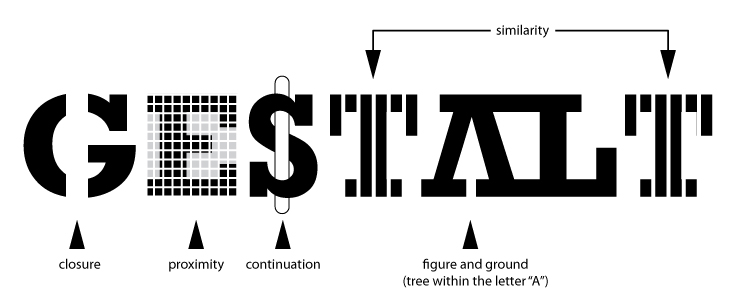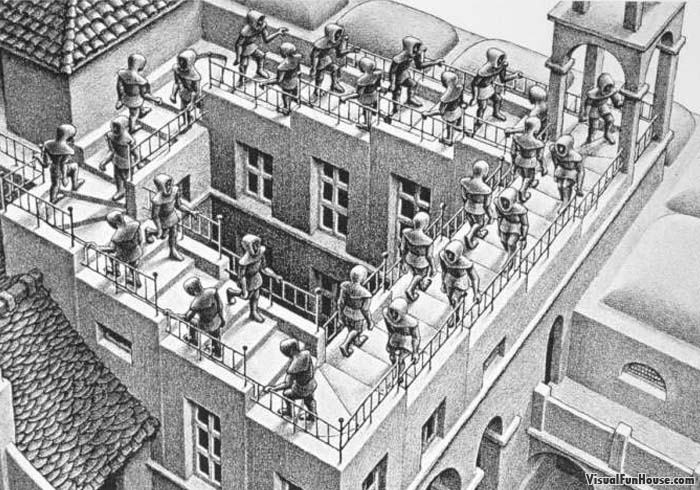
A large compoenent of KCM is separating the perception of music versus its structure; these are not always the same as the gestalt effect shows. The gestalt principle as applied to KCM is summarized as follows: When a musical pattern is presented to us, we recognize it, remember it, recall it, and reconstruct it. In KCM, this means that not only are key, chord, and mode “heard” simultaneously but that when a note is missing, the dynamics depends on treating it as missing from all three spaces which allows your brain a good chance of reconstructing the missing note.
Further discussion of the applications of Gestalt principles to music and KCM can be found at the following:
-Short and Long Term Note memory
-Banach-Tarski reconstruction
” The gestalt effect is the capability of our brain to generate whole forms, particularly with respect to the visual recognition of global figures instead of just collections of simpler and unrelated elements (points, lines, curves…).”
Related to optical illusions
“The Gestalt principles of perception govern the way we group different objects. Good form is where the perceptual system tries to fill in the blanks in order to see simple objects rather than complex objects.”

Neverending…
some say ascending; some say descending
“what we see overrides what we hear”
Gestalt effect and:
-simultanous perception of KCM
-missing bass
-Tritone recognition
